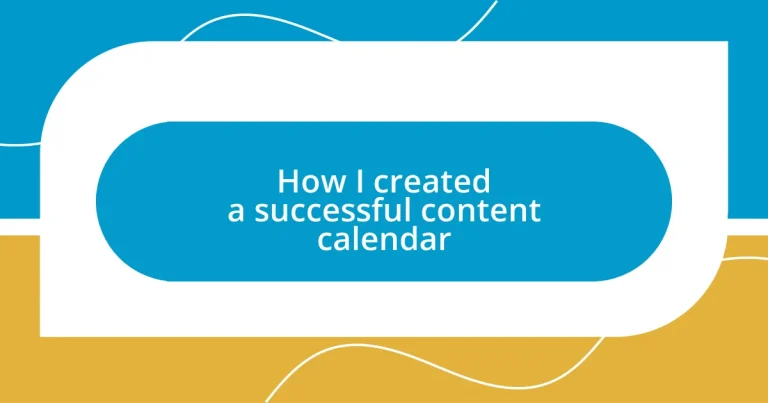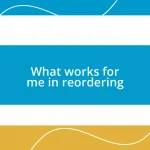Key takeaways:
- A content calendar enhances organization and streamlines workflow by providing a visual plan for content creation and publication.
- Setting clear goals and researching audience preferences are essential for creating targeted, engaging content that resonates with the audience.
- Regular analysis of content performance and audience feedback allows for strategic adjustments, ultimately improving content effectiveness and engagement.
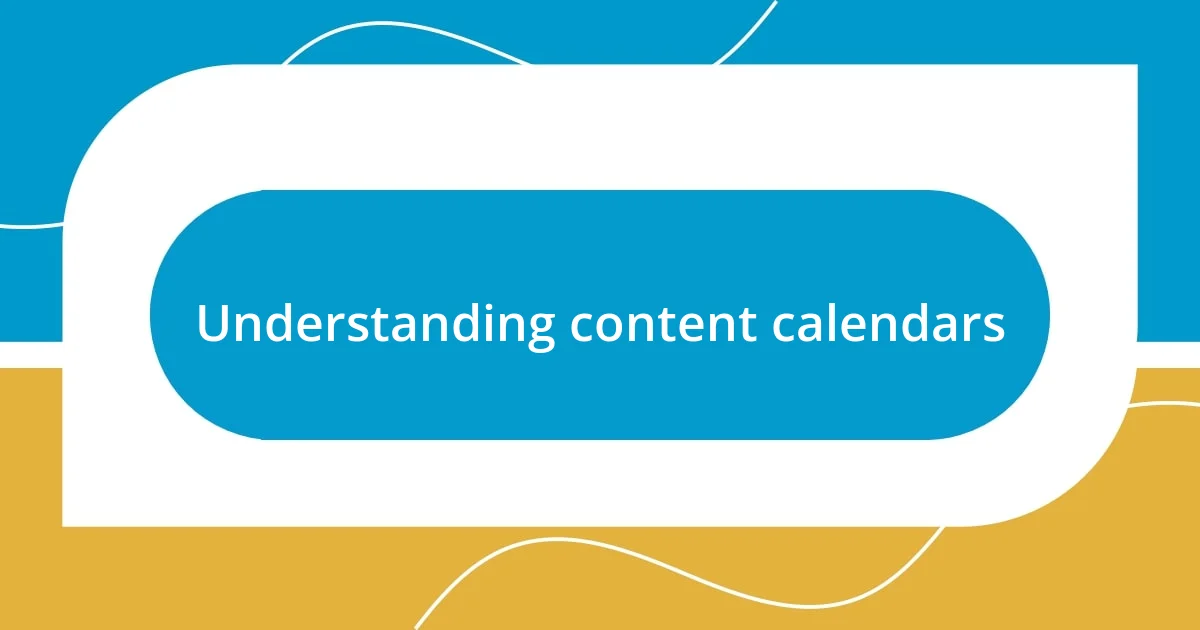
Understanding content calendars
When I first stumbled upon the concept of a content calendar, it felt like unlocking a secret door to better organization. A content calendar is essentially a visual plan that outlines what content you will be creating and when it will be published. It’s like having a roadmap; without it, I often found myself lost in a sea of ideas, unsure of what to tackle next.
Using a content calendar can dramatically streamline your workflow. I remember the chaos of juggling multiple projects without any clear direction. Questions would race through my mind: “Am I posting too often?” or “Did I miss an important date?” A well-structured calendar not only keeps track of deadlines but also allows me to align content with specific events or marketing campaigns, making it feel more purposeful and timely.
One of the most eye-opening moments came when I started experimenting with themes for each month. By focusing on a central idea, I could create a cohesive narrative across all platforms, which resonated with my audience. Have you ever noticed how content flows better when there’s a clear theme? That’s the beauty of a content calendar—it transforms scattered ideas into a harmonious story that keeps readers engaged and eager for what’s next.
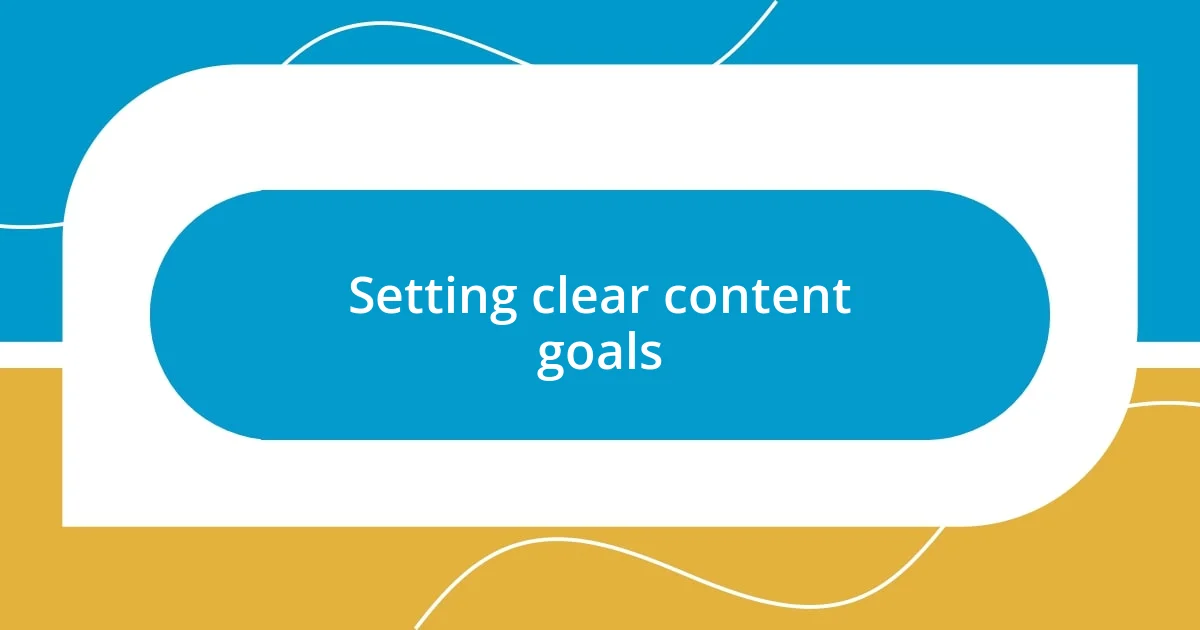
Setting clear content goals
Setting clear content goals is a game-changer. When I first set out to create my content calendar, I realized that without defined objectives, I was merely filling the schedule with posts. I took a step back and asked myself, “What do I want to achieve with my content?” This reflection helped me hone in on specific, measurable goals that guided my entire strategy.
Here’s a quick rundown of how I approach setting these goals:
- Establishing purpose: I focus on whether I want to inform, entertain, or engage my audience.
- Target audience: Understanding who I’m writing for sharpens my content focus.
- Frequency: Deciding how often I want to post helps balance consistency without overwhelming myself.
- KPIs: I set key performance indicators, like engagement rates, to assess the success of my content.
- Review and adjust: Periodically, I evaluate my goals to ensure they align with changing audience needs and trends.
This thoughtful approach not only clarified my vision but also gave my content the direction it previously lacked. Whenever I hit a snag, referring back to my goals reignited my creativity and motivation. It’s almost like having a North Star guiding me through the chaos of content creation.
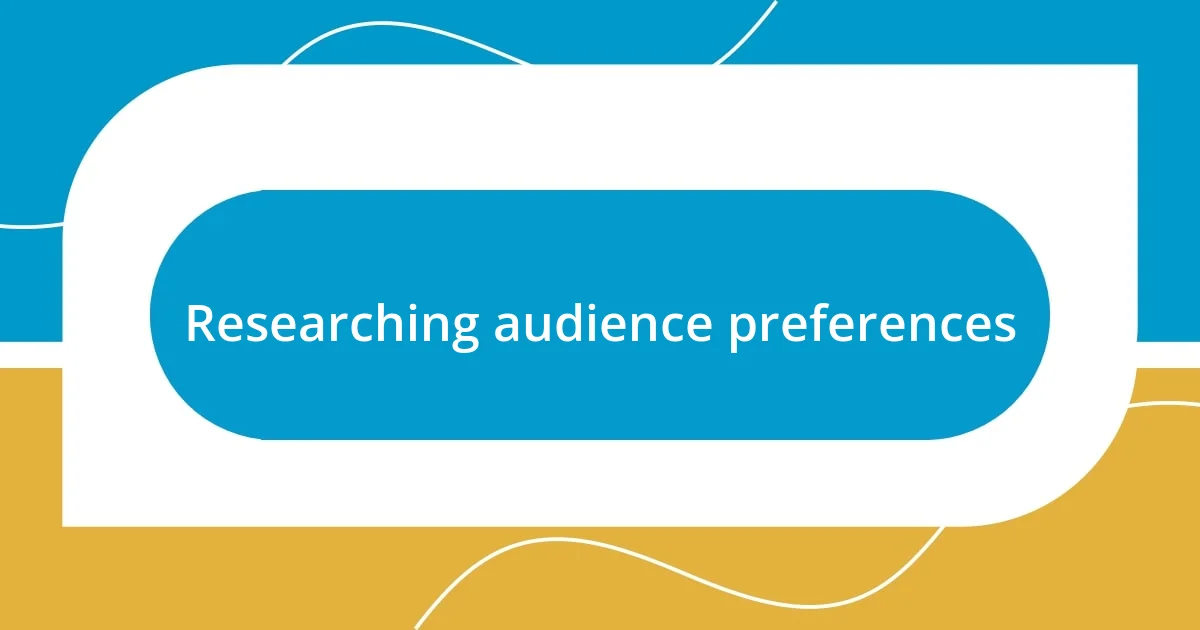
Researching audience preferences
Researching audience preferences is a crucial step in my content calendar creation process. I remember the early days when I relied solely on intuition for what my audience wanted. This often led to mixed results—some posts resonated, while others fell flat. To avoid this guesswork, I started digging deeper into audience preferences through surveys and social media insights. Gathering this data transformed my approach. Now, I know exactly what topics elicit excitement and engagement from my audience.
Another aspect I found invaluable was analyzing competitor content. By checking what other creators in my niche were doing, I could spot trends and uncover gaps. I once noticed a competitor’s post series that went viral. It sparked a lightbulb moment for me; I realized there was an underserved topic within my niche that I could expand on. This kind of analysis doesn’t just keep my content fresh; it enables me to fill a need in my audience, enhancing my standing as a trusted resource.
Lastly, I can’t stress enough the importance of regular feedback from my community. I established channels where my audience could share their interests and questions. Believe me, nothing feels better than creating something that people genuinely want to see. Those moments of alignment with my audience not only boost engagement but also deepen my connection with them, which is ultimately the heart of meaningful content creation.
| Research Method | Benefit |
|---|---|
| Surveys | Direct insights into audience desires |
| Competitor Analysis | Identifies trends and gaps in content |
| Feedback Channels | Builds community and alignment with audience |
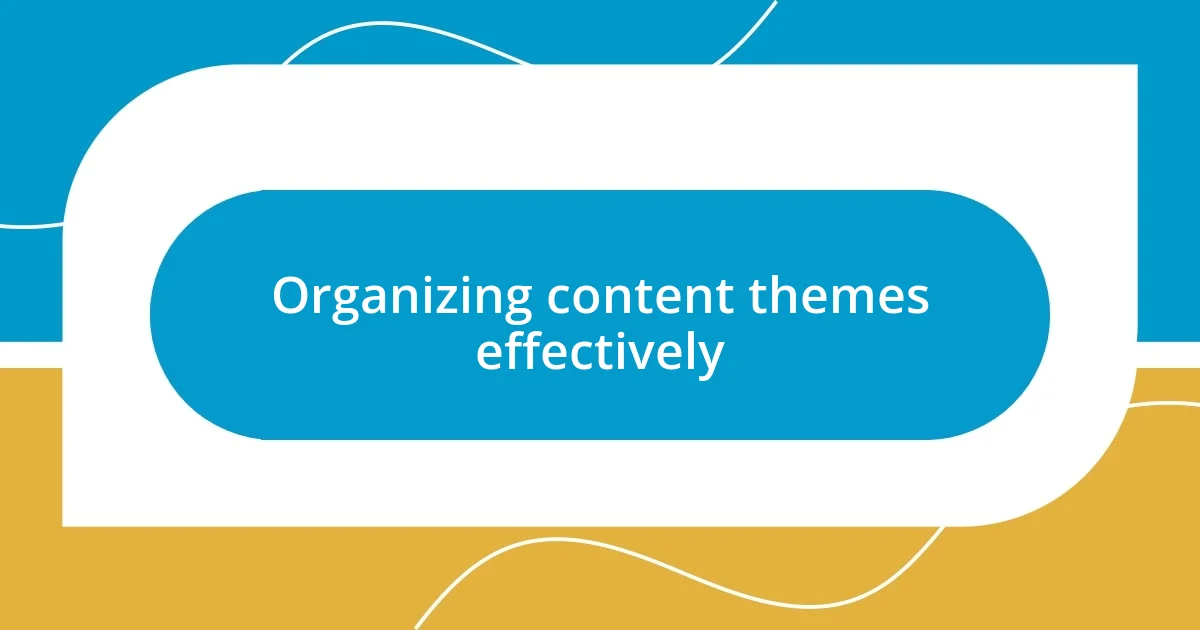
Organizing content themes effectively
Organizing content themes effectively can transform your content calendar from a mere schedule into a powerful storytelling tool. When I began focusing on themes, I felt an immediate shift in how my content was received. I realized that grouping my posts around specific ideas not only created consistency but also allowed my audience to anticipate what was coming next. For instance, dedicating a month to “Sustainable Living” meant I could explore various angles—from eco-friendly products to sustainable cooking—creating a rich tapestry of related content that kept readers engaged.
I remember one particular month when I lined up a series of posts on mental health awareness. Each week, I tackled a different aspect—from coping strategies to personal stories shared by my audience. The synergy between these posts not only educated my followers but also fostered a sense of community. This experience reinforced a lesson I often remind myself: Does your content calendar reflect the interconnectedness of your themes? The answer could be the difference between scattered posts and a cohesive narrative that resonates deeply.
Another technique that boosted my organization was creating a visual roadmap of content themes. I used color-coding to represent different topics, allowing me to easily identify gaps and overlaps. This visual cue made the planning process less daunting. Over time, I found that having a bird’s-eye view of my themes helped me maintain a balance between evergreen content and seasonal trends. It’s a simple yet effective strategy that can save you from the last-minute scramble for ideas and ensure that your content continually evolves with your audience’s interests. After all, isn’t it more fulfilling to create with intention rather than chase fleeting inspiration?
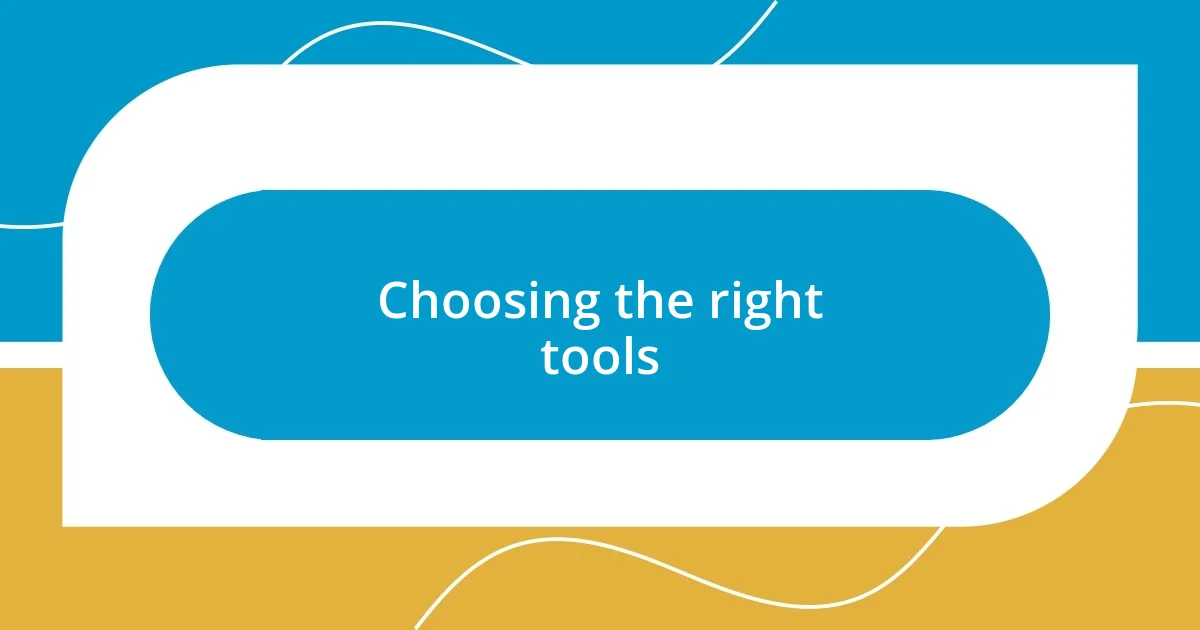
Choosing the right tools
Choosing the right tools is a game-changer in crafting a successful content calendar. When I first began, I found myself overwhelmed by spreadsheets and clunky software that complicated the process rather than simplifying it. I eventually discovered user-friendly tools like Trello and Asana, which allowed me to visualize my content in a way that truly resonated with my workflow. It was like a breath of fresh air; suddenly, I could see the bigger picture without getting lost in the details.
Flexibility in the tools I chose was also key. I remember experimenting with different formats and features, which taught me something valuable: not every tool serves the same purpose. For example, I use Google Docs for brainstorming ideas collaboratively but switch to CoSchedule for visualizing the publishing timeline. This strategic alignment of tools helps me stay organized while also keeping the creative juices flowing. Have you ever felt stifled by rigid platforms? I sure have, and that’s why I recommend finding tools that cater to your unique needs.
Lastly, I emphasize the importance of integrating tools that allow for analytics tracking. Knowing what works and what doesn’t has transformed my strategy over time. I began utilizing tools like Google Analytics not only to assess audience engagement but also to refine my content approach. It’s astonishing to see how data-driven decisions can elevate your content from good to great. What tools are you currently using that offer insights into your performance? Taking a moment to evaluate this could significantly enhance your content creation journey.
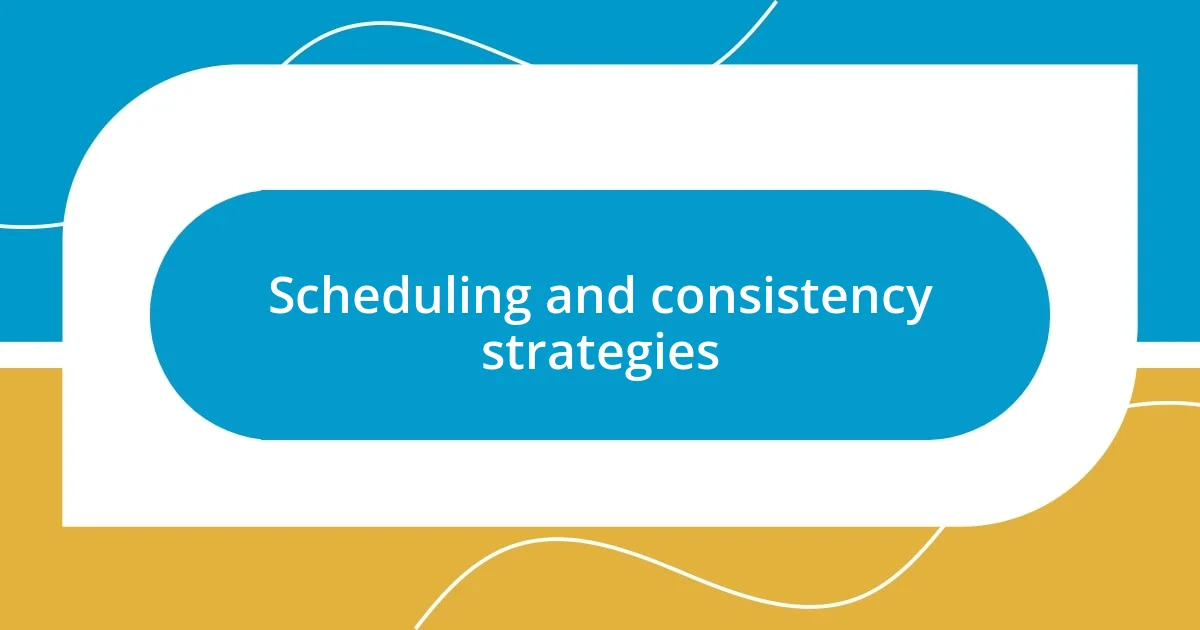
Scheduling and consistency strategies
One of the most impactful strategies I’ve adopted is establishing a dedicated scheduling routine. At first, I would post sporadically, often scrambling for ideas at the last minute. It was stressful and left my audience confused about when to expect new content. But once I committed to a consistent publishing schedule—say every Tuesday and Thursday—I noticed a significant increase in engagement. It’s almost magical how consistency builds trust. Doesn’t knowing when to expect a new post make you feel more connected to a creator?
Another aspect that improved my scheduling was the inclusion of themed weeks. Instead of sticking to a rigid monthly plan, I started experimenting with various weekly focuses. This flexibility gave me the freedom to deep-dive into specific subjects while still allowing room for spontaneous creativity. For instance, one week I might dedicate to “Behind-the-Scenes” content, sharing my creative process, while the next could be all about “Reader Q&A.” It’s a wonderful blend; it keeps things fresh and exciting. Have you ever felt constrained by your own content schedule? Tweaking it to include themes might just be the breath of fresh air you need.
Lastly, I’ve learned the power of pre-scheduling content ahead of time. I remember a time when I found myself overwhelmed with deadlines, and I decided to sit down one Sunday and map out an entire month’s worth of posts. The relief I felt was transformative. I could enjoy the holidays or weekends without the nagging worry of “What will I post tomorrow?” By using scheduling features in platforms like Buffer and Hootsuite, I could ensure that my content consistently rolled out, even during busy times. Isn’t it liberating to know that your content will keep flowing seamlessly, even when life gets hectic?
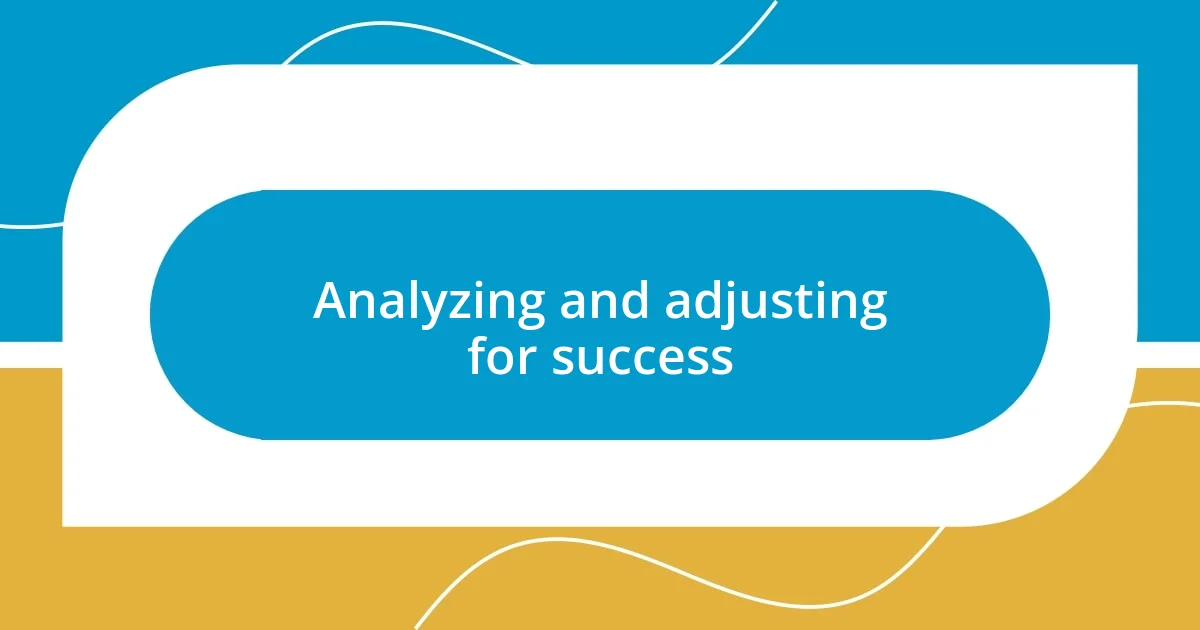
Analyzing and adjusting for success
I’ve found that regularly analyzing the performance of my content is crucial for ongoing success. Initially, I focused only on creating and publishing, without pausing to assess what resonated with my audience. It was only after a few months that I decided to dig into the analytics. The insights I gained were eye-opening. For instance, certain topics that I thought would be hits fell flat, while content I put together spontaneously engaged readers far more than I expected. Have you experienced that disconnect between expectation and reality?
Adjusting my strategy based on this analysis has become second nature. Whenever a piece underperforms, instead of feeling discouraged, I see it as an opportunity for growth. I recall when a particular video tutorial I created didn’t gain traction. Instead of dwelling on it, I analyzed viewer retention and realized my intro was too long. After making adjustments, my next video captured attention right away, leading to a noticeable spike in engagement. This proactive approach turned what could have been a setback into a stepping stone.
Feedback from my audience has also played a pivotal role in shaping my content. I make it a point to create space for comments and questions, often sparked by my previous posts. The dialogue that follows not only helps me understand what my community craves but also fosters a deeper connection with them. I remember a follower once suggested a topic that hadn’t crossed my mind, and it turned into one of my most successful pieces. Have you asked your audience for their input? Trust me, it can lead to ideas that resonate on a whole new level.












